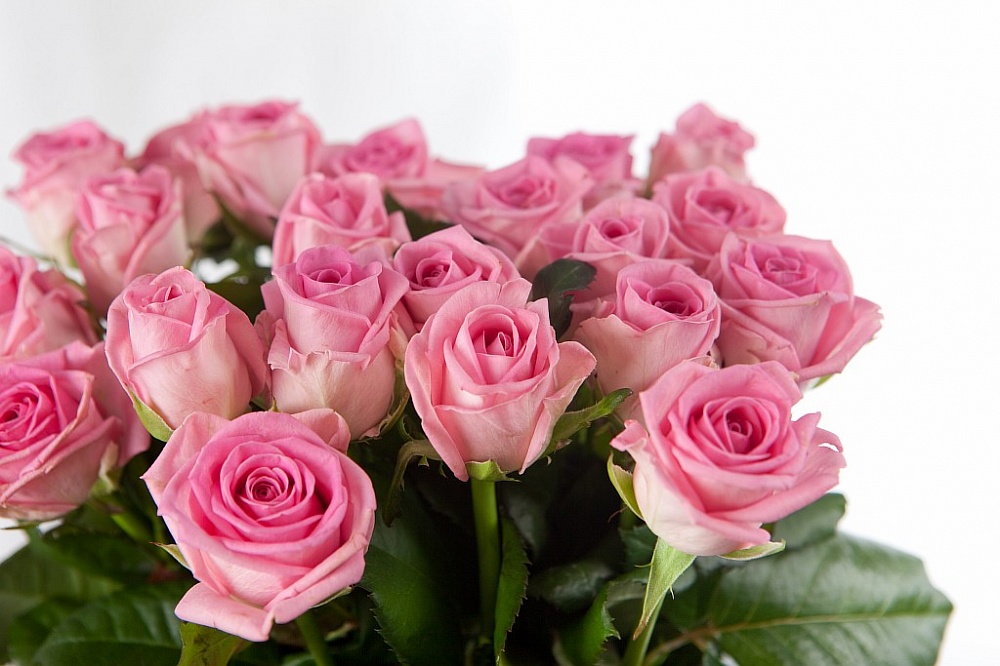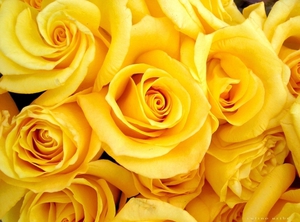Flowers fill our life with joy, colors, tenderness, ennoble and give comfort to the room. Delicate colors of lovingly collected bouquets caress the eye and soothe. Collecting a composition of buds and inflorescences, the giver wants to express his feelings, benevolent attitude and gratitude.
Of course, you count on the fact that flowers will help convey your emotions and feelings to the addressee, therefore, when assembling a bouquet, the language of flowers acquires special importance. Considering the secret meaning of each plant, you can make not just a beautiful and colorful bouquet, but a real message, veiled in secret symbolism, known only to you and your loved one.
Content
History of the language of flowers
The emergence of the beautiful and the mysterious language of plants we owe to the mysterious Turkey, where the specific system of “villages”, unknown in the west, developed and was popular. The basis of this system was made up of rhymes, which made it possible to capture whole lines of poetry in one word or image.
It was this complex, multi-stage and romantic system that drew attention to the French writer Aubrey de la Mottreux and the English writer Mary Wortley Montague, who traveled in the east and, in particular, Turkey at the beginning of the 18th century.
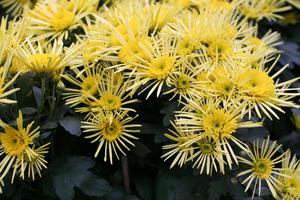 Returning home, both travelers wrote and published their books, in which they shared with readers the emotions of the trip and talked about the way of life of a mysterious and alluring eastern state. In her book Letters from the Turkish Embassy, Lady Mary paid a lot of attention to the oriental art of the “villages”, which literally permeated the personal correspondence of the Turks, filling it with a deep inner meaning.
Returning home, both travelers wrote and published their books, in which they shared with readers the emotions of the trip and talked about the way of life of a mysterious and alluring eastern state. In her book Letters from the Turkish Embassy, Lady Mary paid a lot of attention to the oriental art of the “villages”, which literally permeated the personal correspondence of the Turks, filling it with a deep inner meaning.
Lady Mary observed that all possible colors, paints, fruits, herbs and even bird feathers have verses corresponding to them in oriental folklore, as a result of which any quarrel, letter, exchange of courtesies and even news is possible between people, but not a single line will be written.
Having become a big fan of this art, Lady Mary once sent a parcel with an encrypted message, consisting of 17 objects, which the sender laid out in a certain order.
It should be noted that the package did not consist of only flowers, in addition to daffodil and rose, the shipment contained pear and grapes, as well as spices (cinnamon and cloves) and several items: a straw, a coal and a lock of hair. Also in the parcel was a note with a decryption: opposite each item were written verses corresponding to them. After correlating the verses with the objects, the following message could be folded: “The most beautiful of the young! You are slim like this carnation; You are a rose that has not bloomed. I have loved you for a long time, but you are not aware of it. Have pity for me ... "
Of course, such a cryptography made the right impression sentimental and receptive Europeans. The language of flowers became very popular, came into vogue due to the fact that everyone wanted to compose their own secret, encrypted message.Books with illustrations describing the language of colors and symbols began to be published in huge quantities.
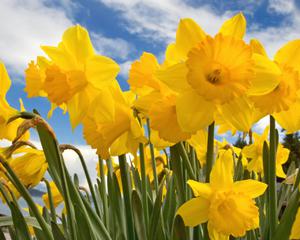 Having received powerful development in Europe, the fashion for symbolism and secret writing with the help of floral designations burst into Russia. And in 1830 the poet Dmitry Petrovich Oznobishin published the book "Selam, or the language of flowers." With the help of this guide, romantic young ladies compiled the most popular home albums at that time, filling their compositions of dried field plants and flowers with new meaning. Symbolism is firmly entrenched among young girls.
Having received powerful development in Europe, the fashion for symbolism and secret writing with the help of floral designations burst into Russia. And in 1830 the poet Dmitry Petrovich Oznobishin published the book "Selam, or the language of flowers." With the help of this guide, romantic young ladies compiled the most popular home albums at that time, filling their compositions of dried field plants and flowers with new meaning. Symbolism is firmly entrenched among young girls.
But change of values and surge of interest to new prose, which supplanted romanticism and sensitivity, also put an end to romance, so, by the middle of the 19th century, interest in the language of flowers had noticeably faded away. And at the beginning of the 20th century, when history took on a new and sharp turn, the language of flowers finally faded away, turning into archaism and a relic of the past. And only at the beginning of the XXI century in Russia again aroused interest in symbolism, cryptography and the language of flowers.
Features of drawing up bouquets
When composing a bouquet, take into account all the nuances, paying special attention to the personality of the person being gifted and the solemnity of the situation.
Sending baby to school on September 1, it is not necessary to load it with huge gladioli or monophonic asters. Compose a light, cheerful bouquet, taking as a basis variegated multi-colored fluffy asters, and add spray miniature roses, daisies and lilies to them. A bright and cheerful light bouquet will be much more pleasant for the teacher than armfuls of asters presented as a formality.
Composing a bouquet for different ages
When composing a flower arrangement, consider the age and preferences of the recipient.
Bouquet for a child should express a riot of colors, be composed of bright, cheerful inflorescences of medium-sized plants without thorns and thorns.
Flowers for a young girl should not be bright and provocative. For a tender age, soft and airy bouquets are made with a base of light pastel colors.
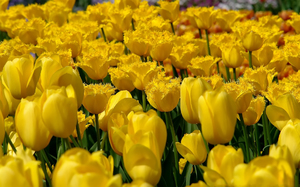 For a beloved girl and woman, of course, first of all bouquets of roses come to mind and the stronger the feelings between you, the darker and deeper the shade of the buds can be allowed. Of course, a rose is a classic symbol of love, and therefore the color and shade of plants can be from pale white to maroon. If the giver wants to impress the girl and wants to make a bouquet of original flowers, it is important to take into account the character of the beloved.
For a beloved girl and woman, of course, first of all bouquets of roses come to mind and the stronger the feelings between you, the darker and deeper the shade of the buds can be allowed. Of course, a rose is a classic symbol of love, and therefore the color and shade of plants can be from pale white to maroon. If the giver wants to impress the girl and wants to make a bouquet of original flowers, it is important to take into account the character of the beloved.
- Sunny joyful gerberas symbolize good mood and can serve as the basis for a bouquet for a cheerful and cheerful person.
- Carnations, contrary to all stereotypes, are an excellent material for a bouquet for a modern girl. These graceful flowers exude a bright aroma and can stand in a vase for a long time. Therefore, they will remind the beloved for a long time about the moment when they were presented.
- Sunflowers are the very embodiment of a sunny summer mood and can improve your well-being on any, even the most cloudy day.
- Lilies embody tenderness, purity and femininity and are suitable for the most romantic and graceful, affectionate natures.
- Orchids are traditionally considered expensive flowers that embody passion, devotion and love, and therefore are suitable for the most expensive girls and wives.
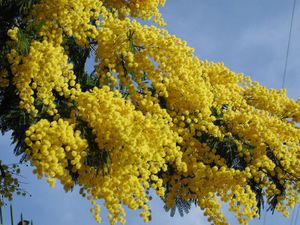 By creating bouquet for mom, you cannot be limited to formal bouquets, because it is important to convey without words, using only flowers, all the love and tenderness. Therefore, the basis of the bouquet should be her favorite flowers or flowers, which will symbolize bright moments from your common past, understandable only to you two.
By creating bouquet for mom, you cannot be limited to formal bouquets, because it is important to convey without words, using only flowers, all the love and tenderness. Therefore, the basis of the bouquet should be her favorite flowers or flowers, which will symbolize bright moments from your common past, understandable only to you two.
Making up bouquet for elderly ladies, avoid adding very dark shades and quickly fading colors. The outline of such a bouquet can be made up of bright carnations or pink peonies, the strong and delicate aroma of these flowers will make a woman feel younger and more energetic.
Bouquet for a man and for an official event
Contrary to popular belief, it is still customary for men to give flowers, but one must approach the composition of the bouquet with caution. A masculine composition should be distinguished by simplicity and conciseness both in form and in content. A small bouquet for men should mainly be monochrome, that is, made up of flowers of the same variety and of the same color. For such bouquets, flowers of a strict saturated color are selected: red, purple, maroon, blue, white.
For minor dates and small events instead of a bouquet, you can give one large flower on a long stem with a bright, spectacular inflorescence, for example, calla lilies, large rose, orchid. Traditionally, male flowers are considered to be plants on a long stem with a large head - chrysanthemums or gladioli, flowers reminiscent of chivalry.
When choosing a color, it should be borne in mind that it is not customary for older men to give bright compositions, and a more original, eccentric bouquet is just suitable for young guys.
When drawing up bouquets for an official eventFor example, to give gifts to colleagues or a boss in the office, there are a number of rules to remember.
- Compositions for official events should not contain hints of romance or playful, flirtatious mood. Avoid exotic and extraordinary flowers, because the bouquet should speak of your respect and respect for the addressee, of recognition of his activities.
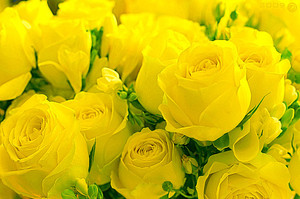 Decorating such bouquets should be kept to a minimum, no beads, brooches, narrow romantic ribbons. All decorations for business bouquets are carried out using compact, discreet greenery.
Decorating such bouquets should be kept to a minimum, no beads, brooches, narrow romantic ribbons. All decorations for business bouquets are carried out using compact, discreet greenery.- Also consider the age and gender of your colleagues. For men, collect bouquets of roses, calla lilies, lilies, gladioli irises, for girls, collect laconic bouquets in pastel colors, and for older women add more juicy shades to the structure of the bouquet.
The meaning of flowers in a bouquet
Consider the most popular types of flowers and their meaning in the bouquet.
Azalea meaning
- Azalea is a female flower, a symbol of tenderness, female fragility, devotion and meekness. But this flower can also represent passion and sadness. Usually, bouquets with azaleas are given before an undesirable inevitable parting, but if the road promises to be long, then the color of azaleas in the bouquet will be red. It is believed that, having settled in a house, an azalea helps its inhabitants to maintain concentration on the main thing and not to be scattered about trifles. As a home flower, azalea will be useful for insecure people, also protecting them from gossip and anxiety.
- Anemone denotes hope and sincerity, but it can also be a harbinger of separation or illness.
- Aster is a symbol of eternal memories, as well as love and sophistication, giving a white aster hints that his love is much greater than the love of the gifted.
- Begonia hints at danger, asking you to be more careful and circumspect.
- A carnation speaks of the passion of first love and promises loyalty and admiration, a yellow carnation indicates rejection and disappointment, and a pink carnation speaks of motherly love.
- Dahlia talks about volatility and whims.
- Geranium alludes to madness and stupidity, but at the same time to nobility.
- Gladiolus is truly a man's flower of gladiators, which speaks of sincerity and immutability.
- Sweet peas say goodbye to the addressee, saying "Goodbye"
- Calla denotes the highest form of delight, fascination, admiration.
- Lily is a symbol of innocence, sinlessness, purity.
- The lotus wishes the addressee a long life and health.
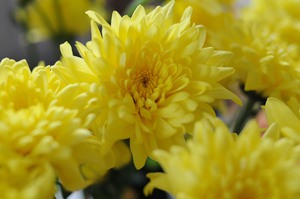 The narcissist hints at the recipient's selfishness and vanity.
The narcissist hints at the recipient's selfishness and vanity.- The peony assures the sender of fiery love and wishes for wealth and fame.
- Rose speaks of true love, passion and desire. If the rose is white, then such a bouquet symbolizes fidelity, honesty, corruption, purity, romance, chastity. The yellow rose rewards friendship and joy.
- Chrysanthemum stands for love and benevolence.
Colors and their meanings
There is color symbolism, according to which each color of plants carries an additional deep meaning.
The meaning of white flowers
White is color of honor, truth, innocence, romance, freshness, chastity. It is a symbol of daylight, truth and power. White color indicates spirituality and majesty. With the help of white flowers, the joyful and festive atmosphere in the room is only intensified, the solemnity of any event is emphasized, and the colors adjacent to them can sparkle with new colors. White flowers harmoniously and sublimely emphasize the grandeur and splendor of any event and holiday, but they are also able to emphasize modesty and meekness.
Red color - it is the bright color of love, life, passion... Red roses are a classic lovers' flower. Due to the fact that red itself is very effective and aggressive, bouquets with its use should be diluted with yellow and white flowers, but do it carefully, because red can suppress other shades.
Meaning of yellow colors
The language of colors characterizes yellow as the color of bright, sunny, good mood. Yellow flowers evoke feelings of fun, lightness, warmth, celebration, also symbolizing wealth and prosperity.
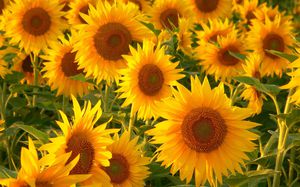 A lot of girls get upset receiving yellow flowers as a gift, because they used to mean separation and misfortune. However, those times are long gone and in the modern world yellow flowers denote the reward of happiness, optimism, vitality.
A lot of girls get upset receiving yellow flowers as a gift, because they used to mean separation and misfortune. However, those times are long gone and in the modern world yellow flowers denote the reward of happiness, optimism, vitality.
Blue flowers are full of energy. Cold and calm blue color gives a feeling of loyalty and trust, refreshes with its coolness, creates a feeling of space and freedom. Blue flowers always look spectacular in monochrome bouquets, and as an additional bright color in calmer compositions.
Always green associated with peace and quiet, bouquets using green color create an atmosphere of comfort and tranquility.
